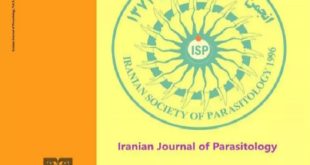Strongyloides stercoralis is a type of roundworm that can cause a serious infection called strongyloidiasis. This infection can affect the intestines, lungs, skin, and other organs of the human body. In this article, we will explain what Strongyloides stercoralis is, how it infects people, what are the symptoms and complications of strongyloidiasis, how it is diagnosed and treated, and how it can be prevented.
What is Strongyloides stercoralis?
Strongyloides stercoralis is a parasitic worm that belongs to the family of Strongyloididae. It is also known as the threadworm, although this name can refer to other types of worms as well. Strongyloides stercoralis is mainly found in tropical and subtropical regions of the world, but it can also occur in temperate areas during summer months2. It is more common in rural areas, areas with poor sanitation, institutional settings, and among socially marginalized groups.
Strongyloides stercoralis has a complex life cycle that alternates between free-living and parasitic stages. In the free-living stage, the worm lives and reproduces in the soil, without a host. In the parasitic stage, the worm infects humans or other animals and lives in their intestines. The worm can also cause autoinfection, which means that it can reinfect the same host without leaving the body.

How does Strongyloides stercoralis infect people?
People can get infected by Strongyloides stercoralis by coming into contact with contaminated soil. The worm has a larval form called filariform larva that can penetrate the human skin when it touches the soil. The larva then enters the bloodstream and travels to the lungs, where it is coughed up and swallowed. The larva reaches the small intestine, where it matures into an adult female worm. The female worm produces eggs by parthenogenesis (without mating), which hatch into rhabditiform larvae. These larvae can either be passed out in the stool or cause autoinfection by penetrating the intestinal wall or the skin around the anus.
What are the symptoms and complications of strongyloidiasis?
Many people infected by Strongyloides stercoralis do not have any symptoms. However, some people may experience:
- Abdominal pain or burning
- Diarrhea or constipation
- Cough
- Rash
- Hives near the anus
- Vomiting
- Weight loss
These symptoms usually appear two weeks after the initial infection. However, they may also occur later or intermittently.
In some cases, strongyloidiasis can lead to serious complications, especially in people with weakened immune systems, such as those with HIV/AIDS, cancer, organ transplants, or taking steroids or other immunosuppressive drugs. These complications include:
Hyperinfection syndrome: This is a condition where the worm multiplies rapidly and spreads throughout the body, causing severe damage to various organs and tissues. It can cause pneumonia, meningitis, sepsis, bleeding, and death.
Disseminated infection: This is a condition where the worm migrates to other parts of the body besides the intestines and lungs, such as the brain, heart, liver, kidneys, eyes, and skin. It can cause inflammation, abscesses
– function. Disseminated infection can also be fatal.
– Eosinophilia: This is a condition where the level of eosinophils, a type of white blood cell that fights parasites, is abnormally high in the blood or tissues. Eosinophilia can cause allergic reactions, inflammation, and organ damage.
How is strongyloidiasis diagnosed and treated?
Strongyloidiasis can be diagnosed by various methods, such as:
- Stool examination: This involves looking for the rhabditiform larvae of Strongyloides stercoralis in the stool samples under a microscope. However, this method may not be very sensitive, as the larvae may not be present in every stool sample or may be confused with other worms.
- Blood test: This involves measuring the level of eosinophils or antibodies against Strongyloides stercoralis in the blood. However, this method may not be very specific, as eosinophilia or antibodies may also be caused by other parasites or conditions.
- Serological test: This involves detecting antigens (proteins) of Strongyloides stercoralis in the blood or other body fluids using a technique called enzyme-linked immunosorbent assay (ELISA). This method is more sensitive and specific than the previous methods, but it may not be available in all settings.
- Molecular test: This involves identifying the DNA of Strongyloides stercoralis in the stool samples using a technique called polymerase chain reaction (PCR). This method is very sensitive and specific, but it may be expensive and require specialized equipment.
Strongyloidiasis can be treated by various drugs, such as:
- Ivermectin: This is an antiparasitic drug that kills the adult and larval forms of Strongyloides stercoralis. It is usually given as a single oral dose, but it may need to be repeated in some cases. It is considered the drug of choice for strongyloidiasis.
- Albendazole: This is another antiparasitic drug that kills the adult and larval forms of Strongyloides stercoralis. It is usually given as an oral dose for three to seven days. It is considered an alternative drug for strongyloidiasis.
- Thiabendazole: This is an older antiparasitic drug that kills the adult and larval forms of Strongyloides stercoralis. It is usually given as an oral dose for two to three days. It has more side effects than ivermectin or albendazole, such as nausea, vomiting, dizziness, and headache.
People with hyperinfection syndrome or disseminated infection may also need supportive care, such as fluids, oxygen, antibiotics, steroids, or intensive care unit admission.
How can strongyloidiasis be prevented?
Strongyloidiasis can be prevented by various measures, such as:
- Avoiding contact with contaminated soil or water
- Wearing shoes and gloves when working or walking on soil
- Washing hands with soap and water after touching soil or animals
- Washing fruits and vegetables before eating
- Boiling or filtering water before drinking
- Improving sanitation and hygiene in endemic areas
- Treating infected people and animals
- Screening people at risk of infection, such as travelers, immigrants, refugees, or immunocompromised patients
Conclusion
Strongyloides stercoralis is a parasitic worm that can cause a serious infection called strongyloidiasis. It can affect the intestines, lungs, skin, and other organs of the human body. It can cause various symptoms and complications, such as abdominal pain, diarrhea, cough, rash, hives, vomiting, weight loss, hyperinfection syndrome, disseminated infection, and eosinophilia. It can be diagnosed by stool examination, blood test, serological test, or molecular test. It can be treated by ivermectin, albendazole, or thiabendazole. It can be prevented by avoiding contact with contaminated soil or water, wearing shoes and gloves when working or walking on soil,
Strongyloides stercoralis is a parasitic worm that can cause serious health problems if not diagnosed and treated promptly. Therefore, it is important to be aware of the signs and symptoms of strongyloidiasis, seek medical attention if needed, and follow the prevention measures to avoid getting infected or spreading the infection to others. By doing so, we can reduce the burden of this neglected tropical disease and improve the quality of life of millions of people around the world.
 انگل شناسی پزشکی Medical Parasitology
انگل شناسی پزشکی Medical Parasitology


